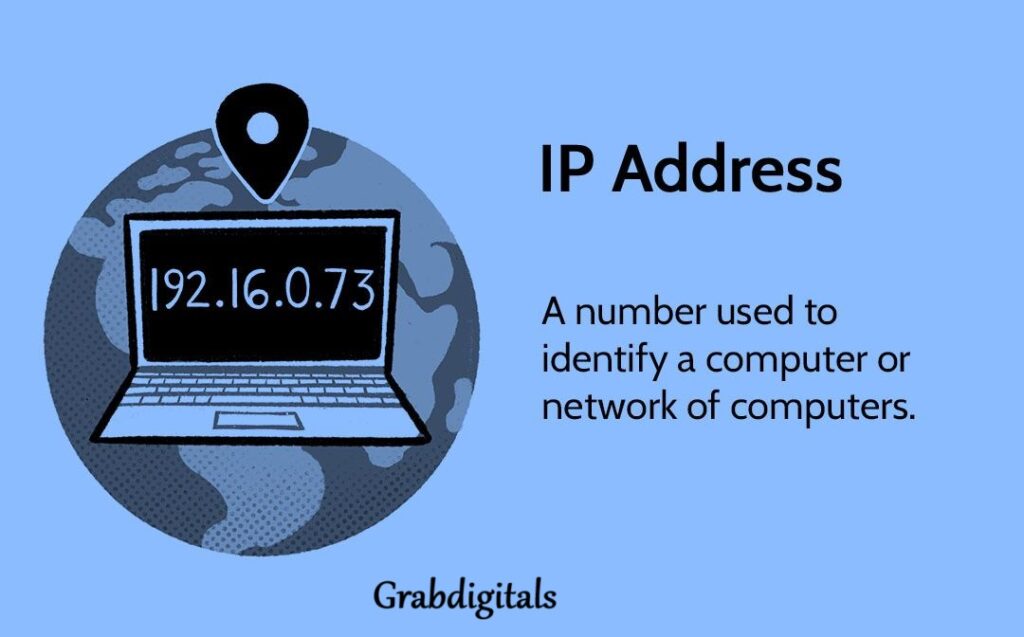In this lesson you will learn how web works ,Now that we have covered the basics of affiliate marketing and introduction to digital marketing, we’ll move towards the next major step – building your Website! To get your website live on the Internet, we need to create a website, register a domain name, get a web hosting space, and upload it on the web server. To get a better understanding of these things, we first need to learn how the web works.
Better understaning with example, how the web works
Our goal in this entire course is to teach you things in the simplest way possible, How Web Works. We’ll keep that in mind as we move along.
The Internet is made up of tens of millions of computers. A website “lives” (or is “hosted”) on just one of them. When you visit a website, how does your computer know which one of those millions of other computers has the website you want?
First, it’s very important to understand that each computer on the Internet has an “IP Address”. “IP” stands for “Internet Protocol”. IP addresses are similar in many ways to a Phone number. Like every phone has a phone number, similarly every computer has an IP address.
IP addresses are made up of 4 numbers ranging from 0-255, each number separated by a dot or period. For example, 231.12.139.112 is an IP address.
If you want to call a phone, you dial its phone number. If your computer wants to talk with another computer, it uses its IP address.

So, whenever you visit a website, a system (called DNS) automatically converts that domain name to the IP addresses of the computer (web server) where that website is available (or is hosted).
Your browser requests the website, and receives the website files (HTML) and displays the website in your browser.
This is how it happens!
- Open a domain name in your browser (for example: Internet Explorer, Google Chrome, Mozilla Firefox etc.).
- DNS converts the domain name to the IP address of the web server where the website is hosted. (DNS first connects to the DNS server, and then determines the IP address of the web server)
- Your machine requests the website from the webserver.
- The webserver delivers HTML files (with other content like images etc.) to your browser.
- Your browser receives the HTML files, reads and understand them, and displays them on your screen.
Here are some of the terms we learnt today so that you can get more clarity.
Domain name:
A domain name is a way to identify and locate computers and resources connected to the Internet. Every company or organization that wants to be on the internet will register a domain name for use as their online identity. Every domain name has a suffix that indicates which top level domain (TLD) it belongs to.
For example: in the domain “google.com”, “.com” is the top level domain (TLD), also called as domain extension.
DNS (Domain Name System):
Domain Name System, or DNS, is the most recognized system for assigning addresses to Internet web servers (aka “Internet hosts”). Somewhat like international phone numbers, the domain name system helps to give every Internet server a memorable and easy-to-spell address.
DNS Server:
A DNS server is any computer registered to join the Domain Name System. A DNS server runs special-purpose networking software, features a public IP address, and contains a database of network names and addresses for other Internet hosts. When we purchase any domain name, we need to link it to the DNS server of our web server. (We’ll explain this in detail later on.)
Website:
A website is a set of related web pages served from a single web domain. A website is hosted on a web server. All publicly accessible websites collectively form the World Wide Web.
Web Server:
A web server is a computer where the website is stored, and that helps to deliver web content that can be accessed through the Internet.
Web Browser:
A web browser (commonly referred to as a browser) is a software for retrieving, presenting and traversing information resources (including HTML documents) on the World Wide Web. It is responsible for opening websites on your computer.
HTML:
HTML or HyperText Markup Language is the language for creating web pages and other information that can be displayed in a web browser. Thus, a website is made in HTML.
I hope today’s session gave you a basic understanding on how the Internet works. for more content of figital marketing visit our plalists